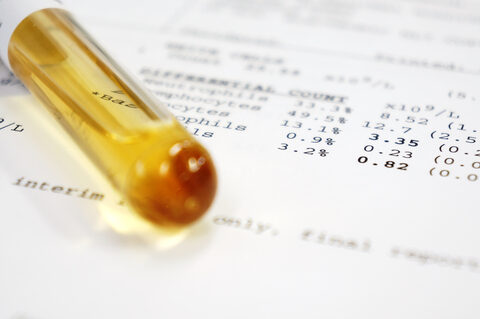Blog: Industry
Keeping Track of Biosamples
20th September 2018

Biorepositories are a key element in a growing number of organizations in the biotechnology, pharmaceutical and medical research industries. They are used to store different types of biospecimens which could be used in a number of applications from medical research to clinical trials. Given that essentially these samples are kept in freezers, or other storage locations, it would seem to be fairly straightforward to have a data management system that records where the samples are stored. However, things are significantly more complicated than that.
Depending on the size of the repository, there may be multiple locations operating at different temperatures, and these may be housed in multiple rooms. Each fridge or freezer may have a number of different shelves and each shelf may have a number of different racks or boxes to store different sample types in. Therefore each sample can have a very precise and unique storage location in order that it can be quickly found and retrieved when needed. As samples are processed or removed for analysis, they must be tracked to their destination. Subsamples, aliquots or extractions of the original samples may be created and these must be tracked, as well as being linked to the original sample.
The sending out and return of items from the biobank must be recorded, together with accounting for any samples that are completely consumed, destroyed, damaged or disposed of. The precise location of any sample or subsample together with its processing history must be known at all times, in other words, a complete Chain of Custody must exist for each item in the Biobank. Depending on the type of samples in the Biobank information such as patient data and consent information may also need to be recorded for each sample. Finally, all of this activity may need to be compliant with highly regulated frameworks such as HTA, GCLP, MHRA and HIPAA.
Some Biobanks store information about the donor, such as ethnicity, age, sex and so forth, while others use a patient ID to link to an external donor information database to deliberately keep this data separate from the Biobank. As well as this accessioning information Biobanks, especially those used for clinical trials, may also keep track of any testing kits provided to donors and automate the inventory re-ordering process for those kits to ensure the smooth running of patient trials.
Managing the data
Biobank management systems are frequently built from Laboratory Information Management Systems (LIMS) but with the number of different possibilities outlined above, they need to be configured to deliver a solution that meets the specific requirements in a clearly understandable way. Xybion LIMS is perfectly suited to this application since the built-in configuration tools allow it to be configured to meet the exact needs of the individual biobank, without the need for any changes to the underlying code. Xybion LIMS Biobank Manager provides a complete sample data management solution from sample collection to sample disposition. Capabilities include:
- Sample check-in, check-out, and in-transit sample notification
- Location definition - the exact physical location can be defined in terms of rooms, and their associated storage locations and sub-locations. All of the storage units can be barcoded in addition to the individual samples being labelled. The software can accommodate different types and sizes of sample containers and can include sample position information within the rack or box.
- Full chain-of-custody - Samples may be divided into sub-samples either when they are stored or before the material is issued to researchers. The system allows each of these aliquots, or sub-samples, to be tracked and their relationship to the parent sample recorded
- Audit trail of all changes. All actions that have been applied to the sample and by whom can also be recorded
- Freezer compaction - since all vacant locations in the freezers are known, it is much easier to compact them to make the optimum use of space
One of the challenges faced when implementing a biobank management system is how the system can evolve with time. Business and regulatory requirements may change months or even years after the initial installation. By offering flexible configuration, the system can be kept in step with these changes. This both extends system life and reduces the overall cost of ownership of the system. In addition, of course, software enhancements are also made available over time. A new container view has been introduced in the latest version of Xybion LIMS, which is particularly useful for biobank implementations. It allows container types to be represented graphically. For example, a container with 96 FluidX tubes in a 12 x 8 grid could be displayed with different graphic icons representing the different samples in each tube, for instance, blood, plasma, saliva and so on. The information shown for each sample can, of course, be configured to individual needs. Tubes may be picked up and moved to an empty cell or swapped with another tube. Entire racks (or well plates) may also be moved around the storage area using the tree view, for example between shelves or freezers. All such changes are recorded in an audit trail, ensuring that there is a complete history of the sample’s storage location(s).
Xybion LIMS Biobanking in action
Xybion LIMS Biobank Manager has been used in many biobanking applications and we have published a number of case studies describing its use.
These are:
The flexibility offered by the Xybion LIMS configuration tools is not restricted to use by Autoscribe technical staff. We run configuration courses for customers, and many of our biobank users have attended these. This allows them to make their own changes, as required and provided they have a support and maintenance contract any self-configuration is fully supported by Autoscribe.
For more information on managing your Biosamples please see our Biobank Management page.
